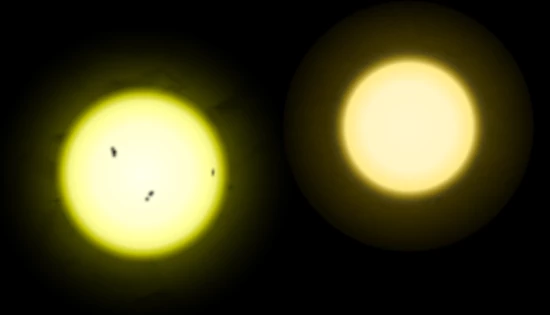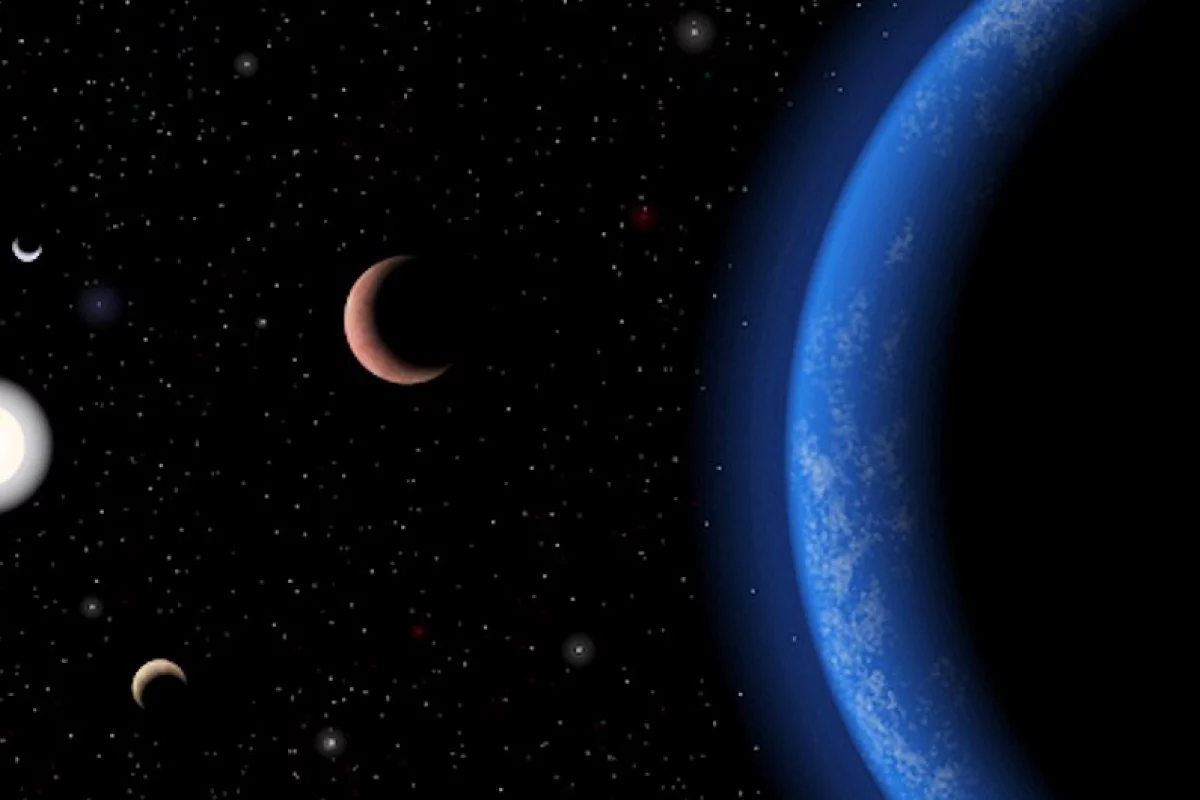Our stellar neighborhood is becoming crowded courtesy of some newly discovered real estate. Astronomers have uncovered evidence buried in the noise of apparently empty data showing that five super-Earths are orbiting the nearby Tau Ceti – a star chosen as one of the targets in the pioneering 1960 Project OZMA search for extraterrestrial life because of its strong similarity to the Sun. Better yet, the two outermost of Tau Ceti's planets appear to be in the star's habitable zone, making them the closest known potentially habitable exoplanets.
Astronomer Mikko Tuomi of the University of Hertfordshire and his colleagues analyzed more than 6000 prior spectroscopic observations of Tau Ceti. Delving deeply with powerful Bayesian analysis methods, they were looking for evidence that the star was being pulled from side to side by the gravitational influence of one or more orbiting planets.
They found it in spades. The best fit to the data suggests that Tau Ceti is orbited by five planets, all residing closer to Tau Ceti than Mars does to the Sun. The tally reads like this:
- Planet.....Orbit Radius (AU).....Orbital Period (days)......Mass (Earths)
- TC b.................0.105........................14 days.........................2.0
The planetary orbits are all very close to circular.

Tau Ceti is the twentieth closest star to our Sun, being a mere 11.9 light years distant. It closely resembles the Sun (unlike most stars) being a bright G-class star, with a mass of 0.78 solar masses, radius of 0.793 solar radii, and a luminosity of about half that of the Sun. It is older than the Sun by over a billion years, and is extremely stable, showing little variation or evidence of sunspots or flares.
Aside this small difference in size, the main distinction is that Tau Ceti is lacking in metals compared to the Sun, a factor probably leading to formation of less rocky planets than in our solar system. Because of this, Dr. Tuomi says: "It is impossible to tell the composition (of Tau Ceti e), but I do not consider this particular planet to be very likely to have a rocky surface. It might be a 'water world,' but at the moment it's anybody's guess."
Because Tau Ceti has only 55 percent of our Sun's brightness, the habitable zone lies closer than it does to our Sun. Despite this, the three innermost planets around Tau Ceti will be too hot to support life – Tau Ceti d's orbit is equivalent to an orbit around our Sun midway between Venus and Mercury.
The outer two planets are potentially habitable. Tau Ceti e falls clearly within the Core Habitability Zone, that being the region within which a planet like Earth will have liquid water. The Planetary Habitability Laboratory (U Puerto Rico, Arecibo) notes that both Tau Ceti e and f fall within the Extended Habitability Zone where larger planets with thicker atmospheres might retain sufficient heat for water to be liquid.
"They're pushing the envelope," says Gregory Laughlin, an astronomer at the University of California, Santa Cruz. "Some or even many of these planets could go away. But I think that they've done absolutely the best job that you can do, given the data. You have to get tons and tons and tons of velocity measurements over many years, and then you really, really have to take extreme care—as this Tuomi et al. paper does—to get rid of all the systematic noise."
Source: University of Hertfordshire (PDF) via Space.com




